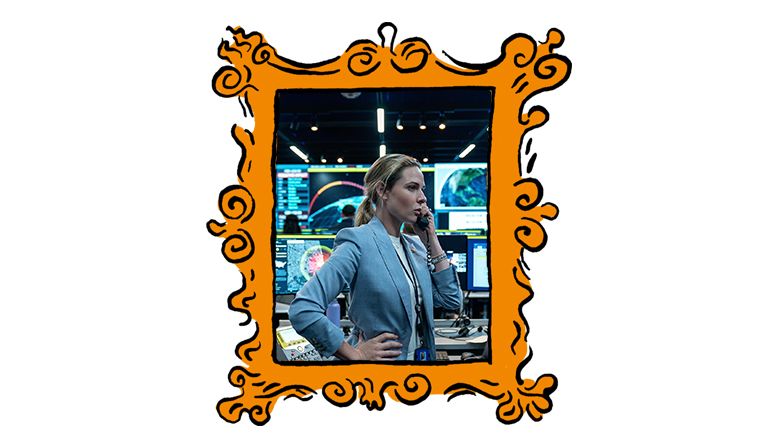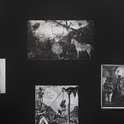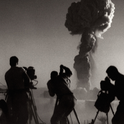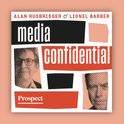In the acknowledgements to her book Nuclear War: A Scenario, shortlisted for the 2024 Baillie Gifford Prize for Non-Fiction, Annie Jacobsen writes: “Nuclear war is insane. Every person I interviewed for this book knows this… And yet here we are.” Over several hundred preceding pages, Jacobsen shows in meticulous detail, sourced from countless official documents and interviews, exactly why it is insane. As we all know, nuclear war would in all probability mean the end of meaningful human life on the planet. Equally haunting, though, is Jacobsen’s relentless account of the systems that are in place to prevent, mitigate or defend against nuclear holocaust. As Jacobsen tells it, they are fragile, unreliable, inadequate and highly likely to fail. Survival, in the end, comes down to the hope that nobody will push the first button.
In Jacobsen’s book, as in other cultural expressions of collective nuclear anxiety, it is North Korea that dashes that hope. A launch is detected and, when its trajectory indicates that it is not just another test, the countdown begins. Some 12,000 years of civilization-in-the-making is reduced to rubble in just over an hour.
North Korea is also the suspect in Kathryn Bigelow’s A House of Dynamite (in cinemas now, on Netflix 24th October). In this scenario, the US fails to detect the initial launch, adding another critical element of ambiguity to the choices that play out in the 19 minutes from launch to impact; 19 minutes in which people whose days started out with no more than quotidian worries must now assess what is happening and determine a response. The final decision lies with a newly elected president, played by Idris Elba, who had started the morning by shooting basketball with some excited schoolchildren.
By the time the missile shows up on US screens, the countdown clock is at 16 minutes and we rehearse the mounting fear through a range of involved people: a senior official whose young son has a fever, another who was plucking up the courage to propose marriage to a girlfriend, normal lives that quickly descend into terror. As in Nuclear War: A Scenario, the systems that are in place—the endlessly practised procedures to assess the authenticity of an attack, to mobilise defences and to decide whether and how to respond—turn out to be false friends. The response also comes down to one man’s decision. On the evening of the screening I attended, the man who, for the next three years at least, would have to make that decision in real life was delivering an incoherent speech to several hundred senior US military officers. It was not a comforting juxtaposition.
The prospect of nuclear war has played a role in our collective culture almost since the first use of the atomic bombs on Hiroshima and Nagasaki. For UK audiences, one of the most important earlier films was Peter Watkins’s The War Game, a mock documentary completed in 1965. Commissioned by the BBC just three years after the Cuban missile crisis had brought the world uncomfortably close to a US-USSR nuclear confrontation, the film portrayed a strike on Kent and the devastating aftermath of sickness, social breakdown and terror.
The War Game was banned in Britain for 20 years. The BBC’s official story was that they had decided it was too disturbing to broadcast, but some years later it emerged that the then cabinet secretary, Burke Trend, and senior civil servants had also reviewed the film and advised the BBC against broadcasting, for fear it would undermine public support for Britain’s nuclear weapons programme.
It might well have done so. Both Jacobsen and Watkins try to lay before us what nuclear planners have known for decades, even as they built the weapons that risked bringing this horror about: that any reassurances governments might offer about shelter, survivability or defence are hollow. Culture bridges the gap between knowing that and feeling it.
Nuclear war haunted the culture of the Cold War, along with the long-running popular campaigns for disarmament. One of the earliest novels, Nevil Shute’s On the Beach, was published in 1957 and made into a film in 1959. Peter George’s Red Alert, published in 1958, became the inspiration for Kubrick’s Dr Strangelove (1964). Other notable works included the survivalist novels Alas, Babylon and Shadow on the Hearth, both taking a post-nuclear strike US as their theme.
These cultural offerings circulated in a world that contained just five nuclear-armed states: the US, the USSR, the UK, France and, to the alarm of western powers, China, which conducted its first test in 1964. Today, India, North Korea, Israel and Pakistan are all acknowledged nuclear states, and a further six states are considered threshold states that have the capacity to develop nuclear weapons should they choose to. The world’s nuclear stock is estimated to be around 13,000 warheads, of which around 10,000 are operational. This is, as one character in A House of Dynamite puts it, reality.
It might have been an illusion, but during the Cold War there was a sense that the USSR and the US understood the deterrent effect of Mutual Assured Destruction and that there were hotlines and mechanisms in place to reduce the likelihood of catastrophe.
Today, in addition to proliferation, we live in a world of declining international cooperation and the destruction of norms and frameworks that underpinned negotiations on nuclear war.
Even so, we came terrifyingly close. In 2017, the death of Stanislav Petrov reminded us that most of humanity owed him their lives. As a lieutenant colonel in the Soviet Air Defence Forces, he was on duty on 26th September 1983, when the early-warning satellite system he was monitoring detected what appeared to be five approaching nuclear missiles. He should have alerted his superiors, who would have launched a counterattack. Instead, he judged—correctly—that it was an error. He lived out the rest of his life as an alcoholic, a story retold in several documentaries on YouTube. Watching A House of Dynamite, I had to wonder: could we be that lucky again?
The new culture of nuclear fear
Books and films informed our atomic nightmares during the Cold War. They are doing so again
October 09, 2025












